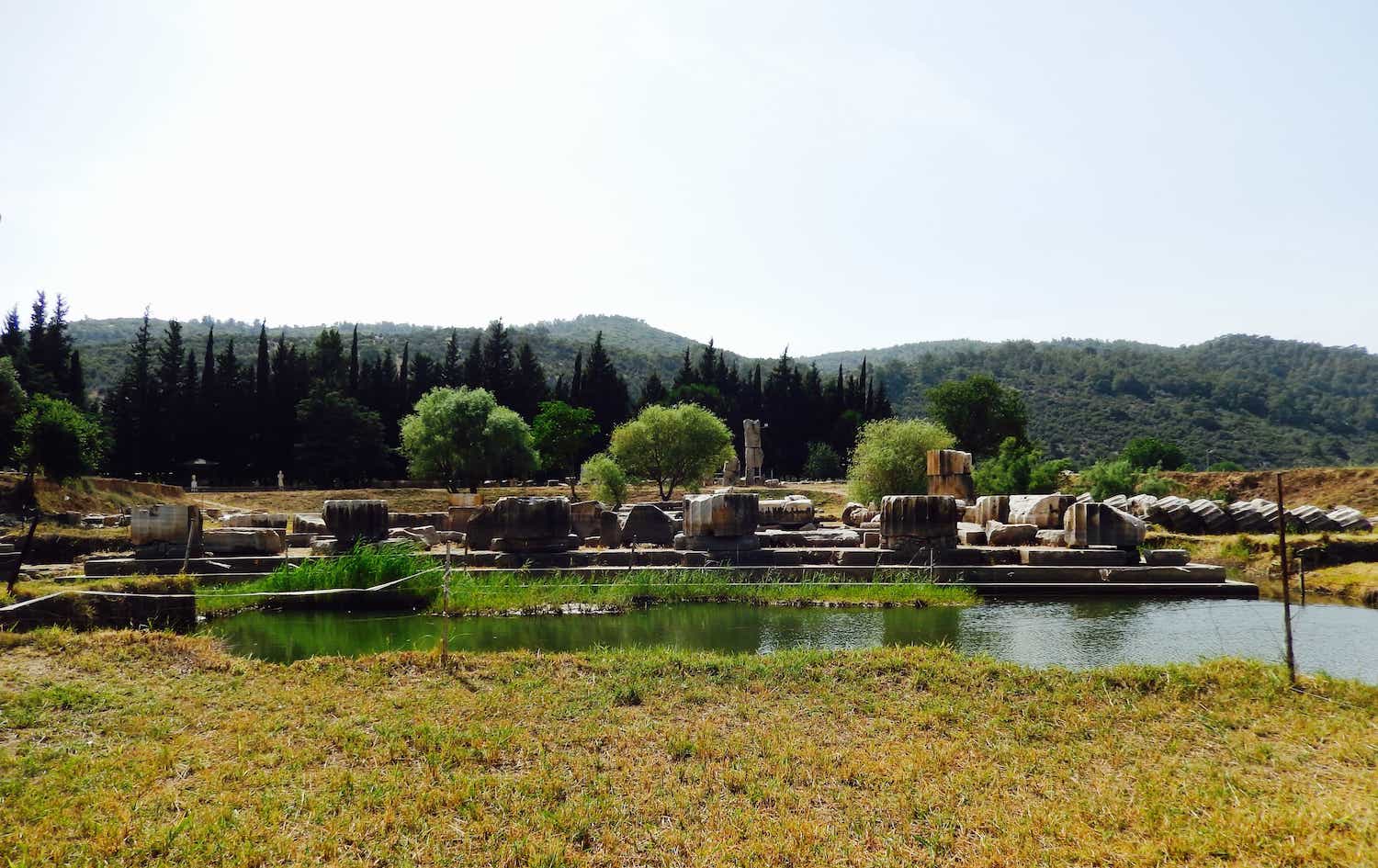
Feeling Apollo: The Sensual Paradigms of Landscape at the Sanctuary of Apollo at Klaros
Jaimie Gunderson assesses the interplay between body and visual representations at the Sanctuary of Apollo at Klaros. In conversation with aesthetic theory and classical studies, Gunderson suggests that visitors to the Klarian landscape were implicated in two competing sensual paradigms, which enabled them not only to see, but to feel, Apollo.
A map of a city speaks of visual order. Contour lines trace valleys and peaks; geometric shapes set meticulously within a neatly defined grid impose on the natural landscape. The grid orders and orients the axes of the city while roads cut through its urban core. In this bird’s eye view, the spatial relationship between architectural and natural forms seems precise, measurable, knowable. A map asserts a logic of representation which posits a knowing subject (a panoptic eye) and known objects (discernible physical features) implying a specific hierarchical relation. In such a systematic layout, every point on the map is flattened into two-dimensional uniformity. There is no sense of the layers that comprise actual life; a disjuncture exists between map and the lived experience of the bodies that hide below its linear representations.
In this essay I attempt to go beneath the grid in search of the “corpo-reality” [i] of the past, to examine the phenomenological dimensions of human experience according to landscape and architecture. This exploration begins at the sanctuary of Apollo at Klaros. I seek to discover the way spaces might have felt, how the divine may have been given meaning, how someone may have encountered Apollo. I take, what Christopher Pinney terms, a “corpothetic” (sensory + corporeal aesthetics) approach to assess synesthetic, kinesthetic, and bodily engagement with visual representations. [ii] This approach links directly back to the ancient Greek meaning of aisthetikos – perception by feeling – “a discourse about the body” concerned with “all the senses simultaneously.” [iii] My exploration focuses on one particular aspect of the Klarian experience: the landscape, which initiated the sensual engagement of a client seeking the oracle. In this discussion I invoke the aesthetic theory of Gernot Böhme who argues that the primary object of the bodily experience of space is “atmosphere.” [iv] For Böhme, an atmosphere is an ontologically indeterminate quasi-object of perception that lies between subject and object. As the medium of aesthetic experience, atmospheres emerge from the “and” that relates environmental qualities and human states or dispositions. Böhme’s theory of aesthetics is much more than a theory of visual perception, and closely aligns with Pinney’s notion of corpothetics. Atmospheres work particularly well in discussions of landscape since the perception of a landscape conjures a certain atmosphere – a “spatially extended quality of feeling” – that is absorbed into the bodily economy of a percipient. [v] There is no singular atmosphere, but an infinite amount of possibilities depending on the receptivity of the percipient.
History of Klaros
Before proceeding, it may be useful to provide a brief overview of the history of the sanctuary. Located along the western coast of Asia Minor, approximately 10 miles from Ephesos, the sanctuary of Klaros was one of the leading oracular sites of Apollo in the ancient world. The site claimed ancient origins, attributing its founding and prophetic pedigree to Manto, the daughter of the renowned seer Tiresias, and her clairvoyant son, Mopsus. [vi] The site is situated near the northern coast of the Gulf of Ephesos, nestled in the deep and narrow Ales (modern Ahmetbeyli) Valley. To the north, hills enclose the sanctuary in an arc; to the south, the mouth of the valley opens onto a curving beach. The sanctuary is located between the ancient city of Colophon and the port town of Notion, both of which variously controlled the sanctuary at different points in its history (see map).
According to the archaeological record, the sanctuary was established in the 8th century BCE. In this period the sanctuary was relatively insignificant as indicated by its omission in Herodotus’s discussion of important oracular sanctuaries, but underwent a significant renovation in the Hellenistic period (4th century BCE), coinciding with the first mention of an oracle related to the re-founding of Smyrna by Alexander the Great. [vii] In the early Roman imperial period, the sanctuary increased in popularity primarily as a result of imperial benefaction. [viii] Decline of the site began around the mid 3rd century CE and culminated in the destruction of the sanctuary by earthquakes in the medieval period. [ix] After its destruction, the site was completely covered by alluvial soil until its rediscovery in 1907.
Although the sanctuary contained a temple to Artemis, the main draw was the temple of Apollo. The first iteration of the Apollo temple, constructed in the Archaic period, contained an open courtyard and a well, which enclosed a sacred spring. [x] Divination practices during this period are uncertain, but based on the appearance of astragals (knuckle bones) on coinage from Colophon, oracles were likely delivered through cleromancy (the rolling of dice). [xi] Hellenistic renovations in the 4th century BCE turned the building into a peripteral Doric temple and added a two-room subterranean basement (an artificial grotto), where the courtyard once existed, which was accessed via stairs from the pronaos. During this period, divination practices seem to have changed to include enthusiastic prophecy. In the Roman period (1st century CE), the ceiling of the basement was renovated to include support arches in order to accommodate increased weight from the naos where new monumental statues of the Apollonian triad – Apollo, Artemis, and Leto – were installed.
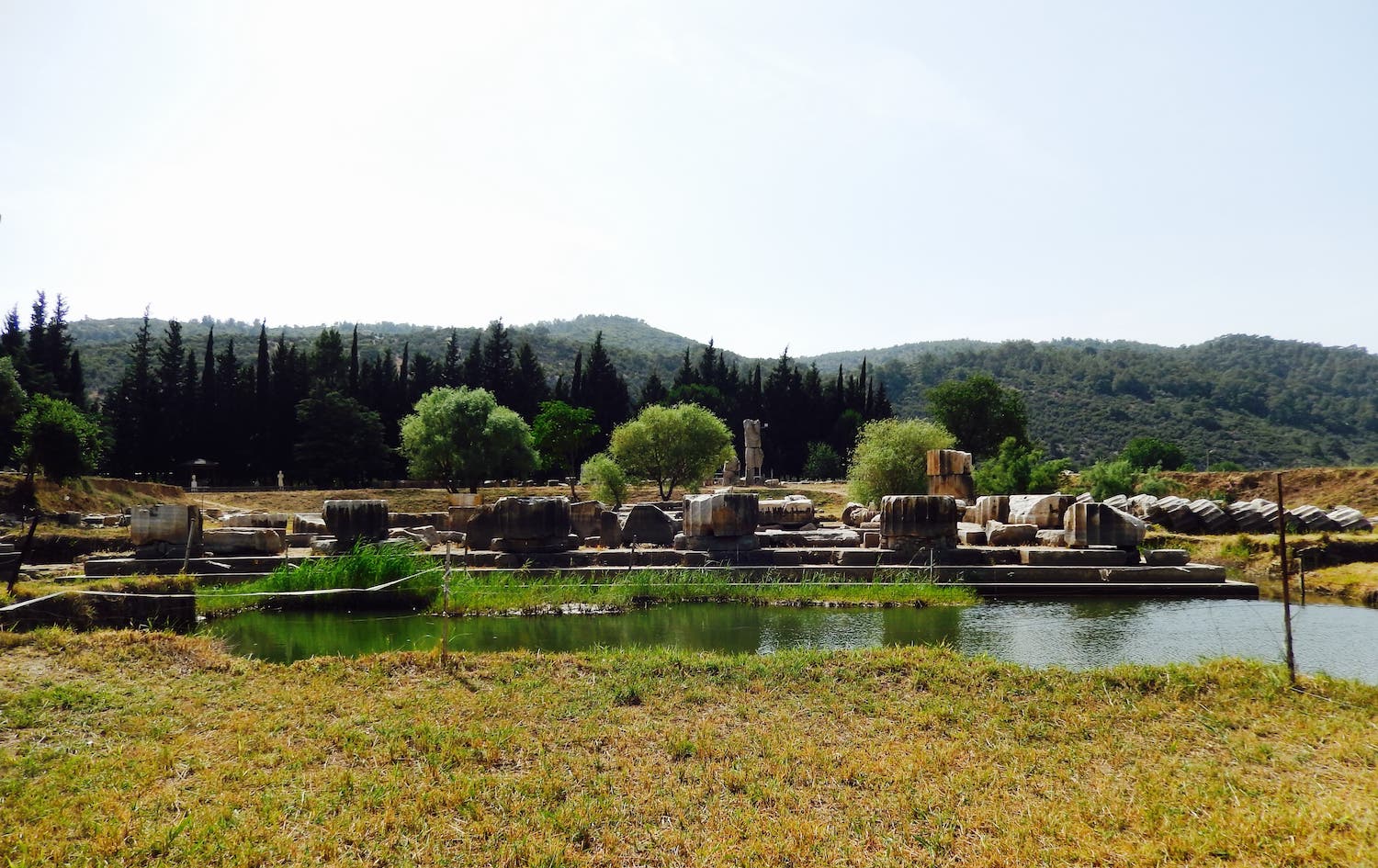 Image 1: Roman period remains of the Temple of Apollo
Image 1: Roman period remains of the Temple of Apollo
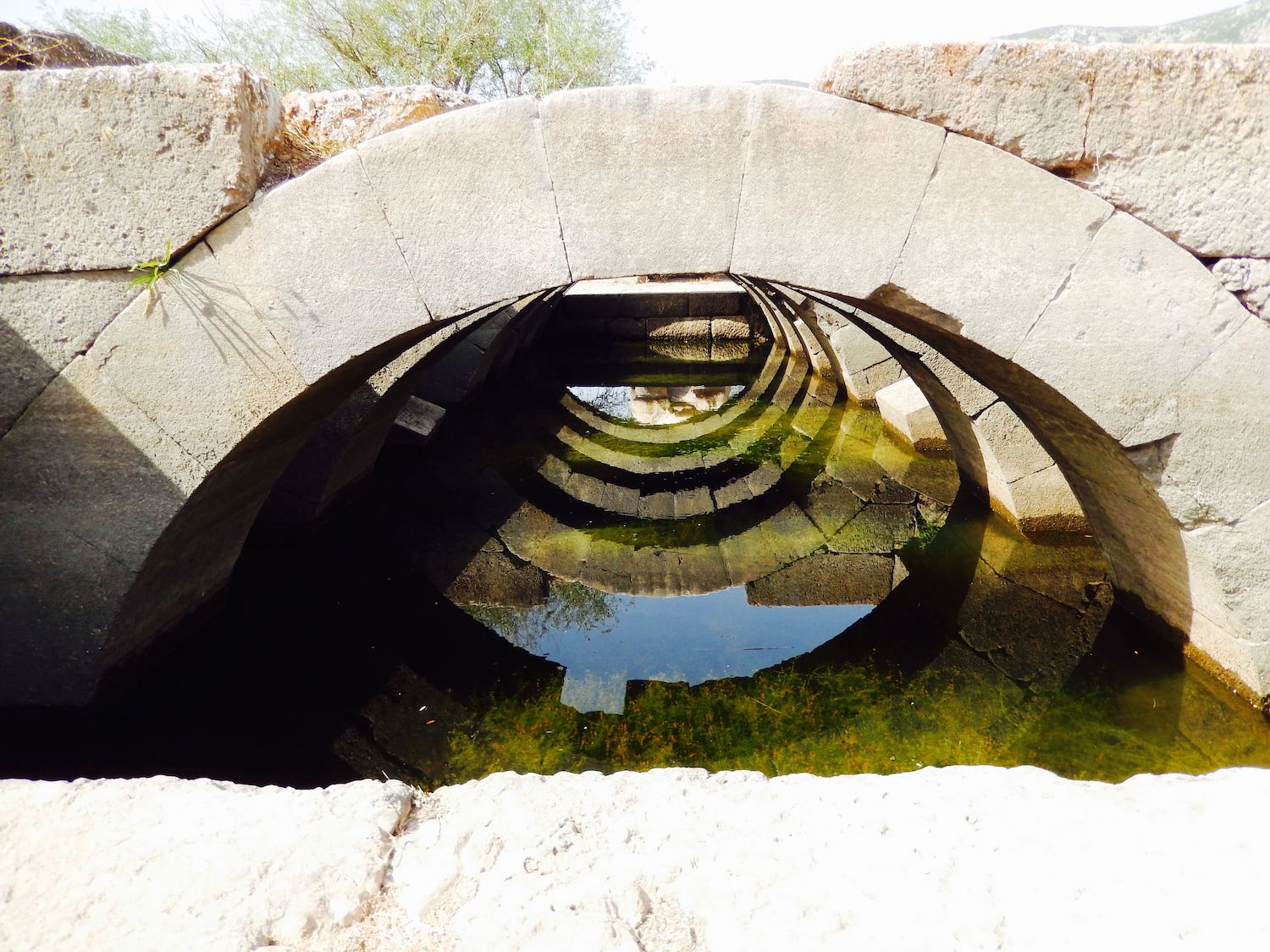 Image 2: Support arches in the ceiling of the now flooded basement of the temple
Image 2: Support arches in the ceiling of the now flooded basement of the temple
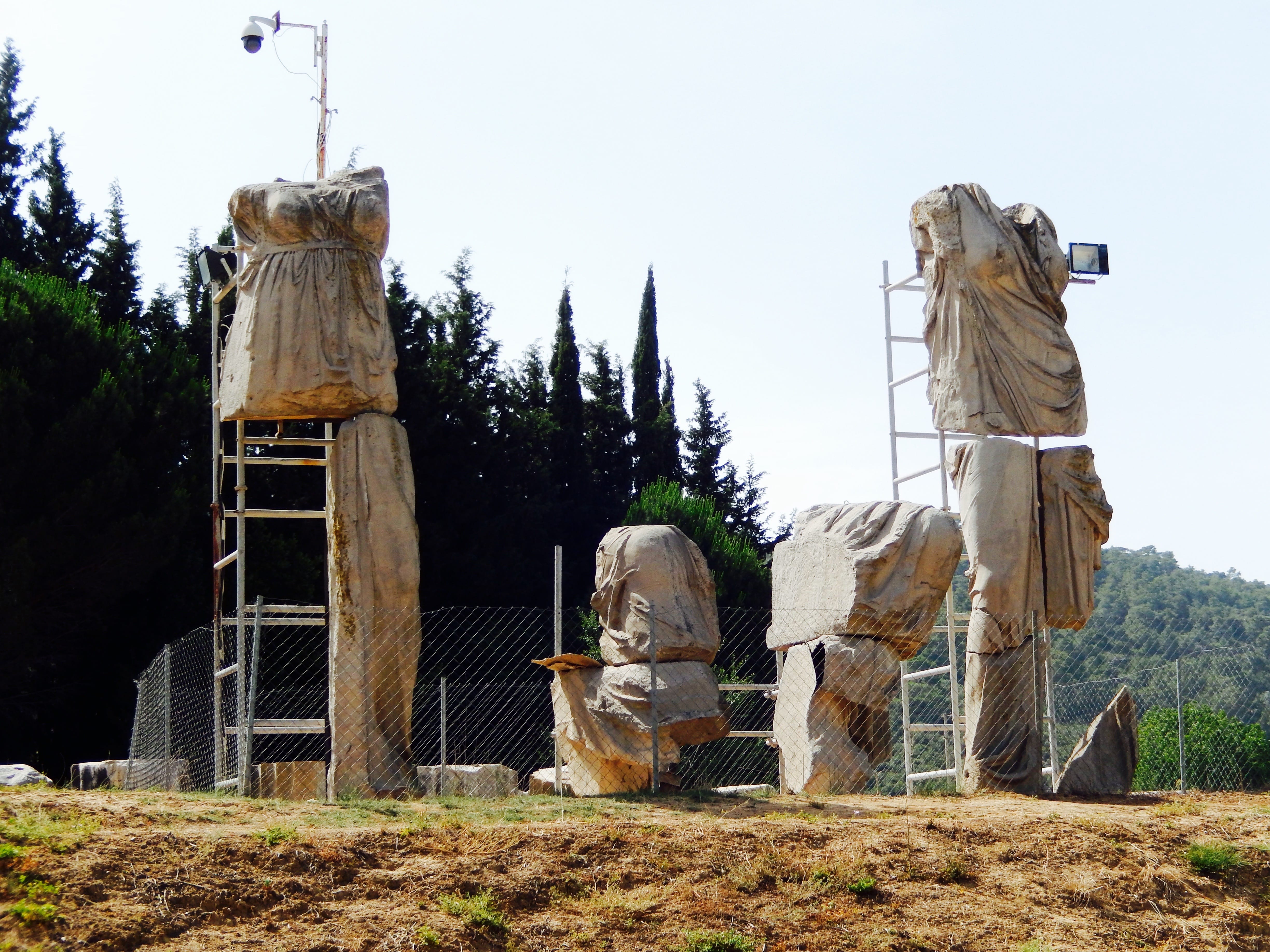 Image 3: Remains of the Apollonian triad cult statues
Image 3: Remains of the Apollonian triad cult statues
During this period delegations from various Greek and Anatolian cities came to consult the oracle. The leader of these delegations, the theopropos, had privileged access to the subterranean area of the temple. The delegations also left behind epigraphic records of their visits, which serve as important sources of information for what we can know about the oracular experience at Klaros.
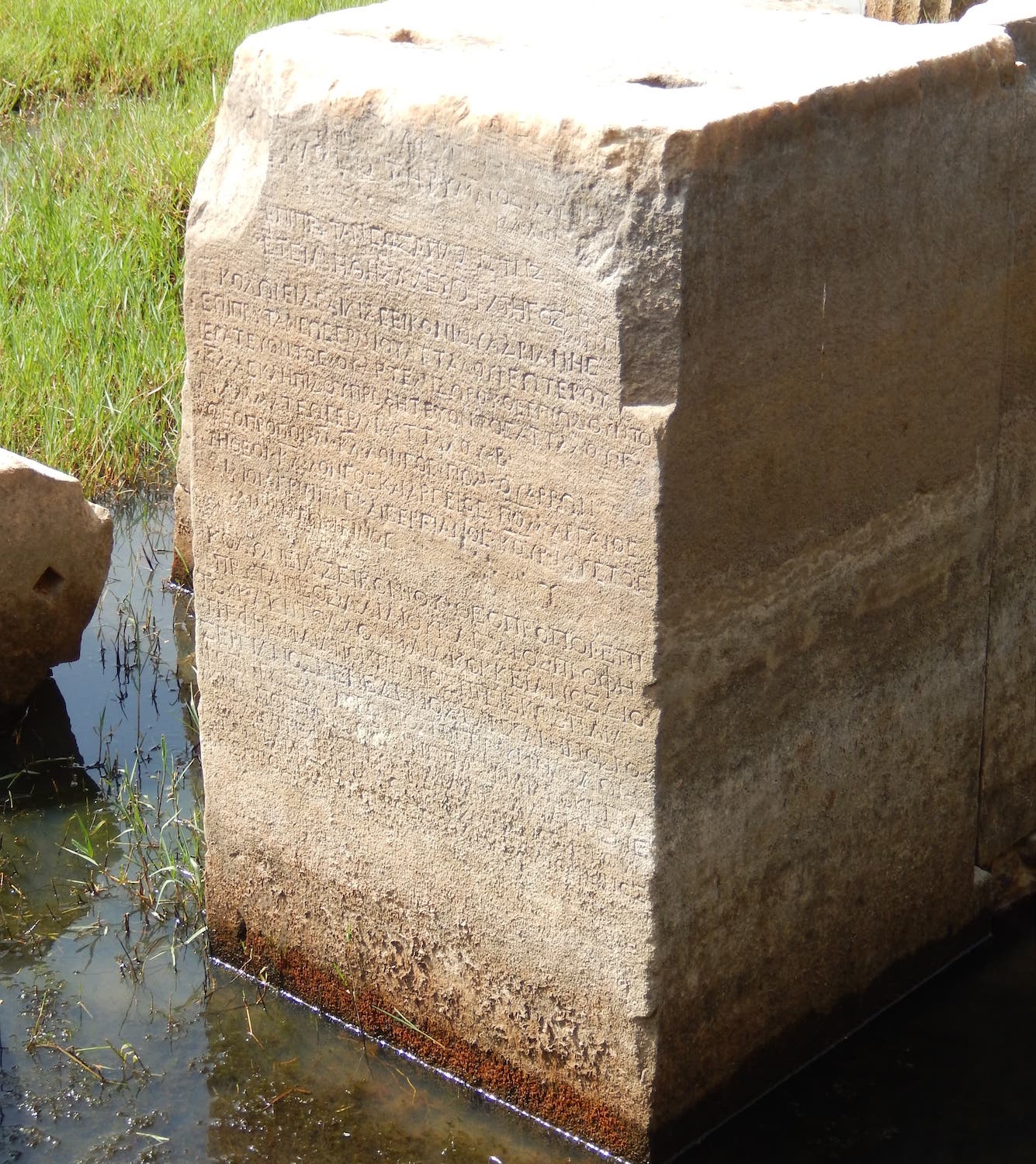 Image 4: Record of a delegation seeking the oracle inscribed on the remains of the southern propylon
Image 4: Record of a delegation seeking the oracle inscribed on the remains of the southern propylon
An Ambivalent Landscape
Landscape played a key role in how a visitor to Klaros experienced the divine. Rather than considering landscape as “a portion of territory subjected to our embodied gaze,” [xii] I characterize it as an actant [xiii] capable of acting on bodies, of inducing feeling, of evoking emotion. This is a conscious move away from the traditional view of landscape as a passive receptacle for human action. Accordingly, my discussion of the Klarian landscape treats the “affective powers of feeling” [xiv] – the atmospheres – that might arise from the “intra-action” – the “mutual constitution of entangled agencies” [xv]– between human and landscape (broadly construed as built and natural environment).
Like other sanctuaries of Apollo, Klaros was situated amid an assemblage of natural landscape features: mountains, a grove, a spring, a cave. [xvi] Vincent Scully argues that the landscape of an ancient site was considered “holy” before any building was ever built upon it since the landscape features “embodied the whole of the deity as a recognized natural force.” [xvii] Building upon Scully’s observation, John Clarke comments that “[s]triking landscape configurations themselves constituted or manifested the presence of the deity.” [xviii] For Clarke, as for Scully, when a “pilgrim” laid their eyes on the landscape of a holy site, they had an epiphanic experience – they saw a god. This experience was reinforced by the built environment, where “each stone, each tightly-spaced column” was considered a part of the deity, appendages of his natural embodiment. [xix] Scully and Clarke tread dangerously close to Mircea Eliade’s now repudiated notion of sui generis sacred space – a space where the divine “irrupts” before being apprehended by people who subsequently develop the space. Yet their evaluations of landscape, I think, lean more toward anthropology than cosmology in that they seek, as Clarke puts it, to “understand ancient Mediterranean behaviors” in epiphanic experiences and how “visual representation encodes” religious experience. [xx] Landscape, in this view, is just one visual representation by which people organized space in order to make sense out of the world in which they lived.
Besides the typical natural features, sanctuaries of Apollo tended to appear at the sites of pre-Hellenic earth goddess worship. Evidence for this practice at Klaros was discovered in 1915 in a cave on the rocky face of the eastern hills overlooking the temple, [xxi] which multiple scholars link with the cult of Cybele. [xxii] In terms of natural features, Scully asserts that “wherever [the goddess’s] symbols were most remote, tortuously approached, and largest in scale, and where they seemed to open up the interior secrets of the earth most violently or most dominated a thunderous view, there the temple of the young god was placed and generally so oriented to complement, but also oppose the chthonic forces [of the goddess].” [xxiii] Scully’s statement brings up two points for consideration. First, because Apollo temples were seemingly constructed to both complement and oppose the features of the goddess, built architecture was merely an elaboration of the natural terrain. Otherwise put, natural features and built features were intended to be interdependent expressions of divinity. As a result, the boundaries between the architectural and non-architectural become blurred in an intertwining engagement with both god and human. Second, from Scully’s description we would expect to find dramatic natural features at Klaros. Yet, Louis Robert, director of Klarian excavations from 1950-61, notes that the location of Klaros is neither grand nor in a place of eminence like most temples. [xxiv] H.W. Pleket likewise comments that Klaros is an “inconspicuous” site located in a “charming plain.” [xxv] Indeed the cave at Klaros is neither large nor dominating, but before the temple of Apollo and its artificial cave were discovered, excavators, following a remark made by Tacitus that oracular consultation at Klaros occurred inside a specus (cave), [xxvi] believed that the oracle was housed inside of a real cave. This belief continued until Robert unearthed the temple of Apollo in 1950 and discovered the cave-like basement. The rather demure aspect of goddess worship at Klaros may minimize Scully’s melodramatic framing of the relationship between Cybele and Apollo in the natural landscape, but it does not detract from the juxtaposition of chthonic forces (inclusive of the natural cave and the explicitly pronounced chthonic-inspired architecture of the temple) with the more pleasant and bright features of the site, such as the grove. Whatever the relationship between chthonic goddess and Apollo, the natural and built features worked together to create a unified, yet disparate aesthetic.
The aesthetic at Klaros thus lay somewhere between disorder and order, the dark and the bright. Wiebke Friese’s research on oracle sanctuaries coincides nicely with the juxtaposition established by Scully and Clarke, as he argues that the natural elements (spring, grove, and cave) of an oracular sanctuary can be classified as part of a locus amoenus or a locus horridus. [xxvii] Friese makes this distinction based on the way in which ancient authors spoke about landscape. Both loci, he notes, were literary tropes – part of a cultural discourse on landscape – that authors applied to real-life settings, [xxviii] which, in turn, I estimate, likely precipitated preconceived notions among visitors of certain landscape experiences. According to Friese, a sanctuary was not limited to a single locus type and could contain elements of both loci. In either case, whether operating singularly or in tandem, Friese suggests that the loci worked to evince the character of the deity. However, he fails to explicate the implications of their juxtaposition on the spatiality of the site as well as how visitors may have been implicated in such landscape tropes. I hope to begin to fill this lacuna by recognizing that each landscape type is its own affective unfolding and, through sensed atmospheres, had physiognomic (read corpothetic) implications for the percipient. [xxix]
According to Friese, a locus amoenus [xxx] is a romanticized paradise, reminiscent of Elysium – a pleasant place, a happy place. The classic description of this landscape type comes from Ernst Curtius: “[a locus amoenus is] a beautiful, shaded natural site. Its minimum ingredients comprise a tree (or several trees), a meadow, and a spring or a brook. Birdsong and flowers may be added. The most elaborate examples also add a breeze.” Curtius notes that the locus amoenus “forms the principal motif of all nature description” from the Roman period to the late medieval era. [xxxi] An example of this type of landscape in an oracular setting is Apollo’s grove at Gryneum, which Pausanias describes as “most beautiful with cultivated trees” that “are pleasing to smell or look upon.” [xxxii] According to Friese, both the grove of ash trees and sacred spring at Klaros are indisputable elements of a locus amoenus. [xxxiii] This view is endorsed in the literary record, particularly in relation to the grove. For instance, Nicander, a poet from Colophon and a priest of Apollo, [xxxiv] describes the sanctuary thus: “No viper, nor harmful spiders, nor the deep-wounding scorpion dwell in the groves of Klaros, since Phoebus veiled its deep glen with ash trees and purged its grassy floor of vicious creatures.” [xxxv] The author of the Homeric Hymn to Artemis paints a similar picture: “[Artemis] who has made her horses rise from the river Meles, deep in rushes, and drives her chariot all of gold swiftly through Smyrna to vine-clad Klaros, where Apollo of the silver bow sits awaiting the far-shooting goddess who delights in arrows.” [xxxvi] Both literary characterizations evoke feelings of safety and comfort, while emphasizing the verdant and lush foliage: trees, grassy, vine-clad. [xxxvii] These texts conjure the Klarian atmosphere, which unfolds spatially on the real landscape through signification and ultimately mediates human perception.
Moreover, since the locus amoenus was a propitious place for happiness, creativity, and abundance, a visitor need not worry about the dangers associated with creepy-crawlies – entities that could otherwise turn Klaros into a locus horridus. Within this locus Apollo emerges as the antithesis to a horrible landscape. Fritz Graf carries the paradisiacal characterization of a locus amoenus even further, referring to the sacred groves of Apollo in Asia Minor as the “ideal place …where god and man meet in divine ecstasy.” [xxxviii] Graf’s description harkens back to Greek notions of meadows of love, places where “virginity finds fulfillment in sexuality.” [xxxix] A locus amoenus is, after all, in the words of the Virgilian commentator Servius, “voluptatis plena” (full of pleasure). [xl] An erotic encounter, however, is complicated in Klaros by Apollo’s shared use of the space with Artemis, the goddess of virginity. Given the presence of both brother and sister, Klaros might be seen as an exclusive, inviolable space where union with the god/goddess is not predicated on Graf’s notion of ecstatic fulfillment, but on a different form of desire – a desire to gain the god’s knowledge through revelation.
In contrast to a locus amoenus, a locus horridus contains imposing mountains, deep gorges, unnaturally dark forests, deserts, swamps, and turbulent water features. These untamed landscapes are frequently populated with dangerous beasts and contain foliage associated with death and the underworld (olive, poplar, and cypress trees). Deities associated with these horrible landscapes are generally characterized as “earthbound.” [xli] Examples of this type of landscape include the precipitous cliffs and inhospitable peaks of Delphi, the toxic Plutonion at Hierapolis, and the dark and dense grove at Herakleia. Simply put, a locus horridus is a landscape that evokes fear and uncertainty, seclusion, and stillness. The natural landscape of Klaros largely escapes any negative publicity in literary sources, but the chthonic nature of the artificial cave under the temple is frequently emphasized. The artificial cave is the only element that Friese is willing to consider as an aspect of a locus horridus, but due to its association with the spring, he judges it to occupy a “position between a locus amoenus and a locus horridus.” [xlii] In this discussion he makes no mention of the Cybele cave overlooking the sanctuary, nor does he mention the mountains. While the mountains of Klaros may pale in comparison to the awesome Phaedriades at Delphi, they provide a formidable frame for the sanctuary. The mountains, then, could be included as elements of a locus horridus, but it is the cave – that is, the artificial one beneath the temple – that I turn to now.
According to Yulia Ustinova, it is a common mistake for modern people to distinguish between artificial and natural caves. She argues that Greeks put emphasis on the “function and symbolism” of caves rather than their “technological and visual aspects.” [xliii] Tacitus, for instance, in his account of the oracular ritual at Klaros, describes that Apollo’s priest descended into a cave and drank from a sacred spring before prophesying. [xliv] Yet he never mentions that the cave was artificial. Iamblichus likewise mentions a subterranean chamber in his description of the divination ritual, but focuses on the function of the ritual rather than the technical details of the artificial space. [xlv] If the sacred grove of Klaros functioned as a shiny, happy space, the cave-like basement did the exact opposite. Caves, Ustinova argues, provided isolation from air, light, sounds, and human society. Within the innermost chamber lay the mystique – and peril – of the chthonic experience. Pliny, for example, notes the danger inside the cave of Klarian Apollo: “there is a pool, by the drinking of which a power is acquired of uttering wonderful oracles, but the lives of those who drink of it are shortened.” [xlvi] Iamblichus adds that when the prophet drinks the water of the spring he is scarcely able to control himself. [xlvii] Although the water is associated with the power of Apollo, it has malefic properties and thus departs from any trope in a locus amoenus. Equally significant for the theopropos within this locus was his descent into the man-made grotto, a claustrophobic and dark space brimming with uncertainty and anxiety. The experience of the artificial cave was far removed from the beneficent grove, but evoked a similar type of desire – a desire for the revelation of Apollo.
In the Klarian landscape, a theopropos was simultaneously implicated in two sensual competing paradigms, traveling from one to the other. He first entered the sacred grove and then descended into a manufactured underground world. The sanctuary was at once a perfect place and a terrible place; a place of repose and a place of uncertainty. The expansive landscape (features of the embodied god) stood in contrast to the localized body of the theopropos, the site where desire, anxiety, and happiness were realized. The landscape features at Klaros – built/natural, ordered/unordered, dark/light – created a conflict, a perceptible drama that engaged the senses. Yet, simultaneously, the landscape became the extended body of the human, in touch and in sync with the naturally and architecturally embodied god. In this paradigm, there is visual epiphany, as Clarke and Scully note, but there is also a reciprocal feeling made possible through the mediation of atmospheres. Through atmospheres the landscape makes its presence perceptible by articulating various qualities, which are sensed by the theopropos and absorbed into a bodily state of being. [xlviii] As a result, a percipient does more than simply see the god in the landscape. Percipients feel the god. In this sense, the atmospheres of both the locus amoenus and the locus horridus worked to emphasize the “intra-action” between the naturally and architecturally embodied god and embodied human experience.
Endnotes
- [i] This is a term coined by Yannis Hamilakis in “The Past as Oral History: Towards an Archaeology of the Senses,” in Thinking Through the Body: Archaeologies of Corporeality, Yannis Hamilakis, Mark Pluciennik, and Sarah Tarlow, eds. (New York: Kluwer Academic/Plenum Publishers, 2002), 122.
- [ii] Christopher Pinney, ‘Photos of the Gods’: The Printed Image and Political Struggle in India (London: Reaktion Books Ltd., 2004), 193.
- [iii] Pinney, Photos of the Gods, 18-19.
- [iv] Gernot Böhme, “Atmosphere as the Fundamental Concept to a New Aesthetics,” Thesis Eleven 36 (1993): 114.
- [v] Böhme, “Atmosphere,” 117-118.
- [vi] Pausanias 7.3.1-2; Strabo 14.1.27. [vii] Pausanias 7.3.1; Pliny HN 5.29; Strabo 14.1.27.
- [viii] The names of Octavian (not yet called Augustus), Tiberius, and Hadrian are all found on or in the temple.
- [ix] Juilette de la Genière believes that the site was destroyed by humans, not erathquakes. See De la Genière, “Le sanctuaire d’Apollon à Claros, découvertes récentes,” Comptes rendus des séances de l’Académie des Inscriptions et Belles-Lettres 136/1 (1992), 206.
- [x] Jean-Charles Moretti, Nicholas Bresch, Isabel Bonora, Didier Laroche, and Olivier Riss, “Le temple d’Apollon et le fonctionnement de l’oracle,” in Le sanctuaire de Claros et son oracle, Jean-Charles Moretti and Liliane Rabatel, eds. (Lyon: Maison de l’Orient et de la Méditerranée-Jean Pouilloux, 2014), 34.
- [xi] Moretti et al., “Le temple d’Apollon,” 34, 36.
- [xii] Veronica della Dora, “Travelling Landscape-Objects,” Progress in Human Geography 33/3 (2009), 334.
- [xiii] My notion of “actant” follows the vital materialism of Jane Bennett. Bennett borrows this term from Bruno Latour’s “actor-network theory” to challenge traditional definitions of matter as passive and inactive, as well as to dissolve the subject/object binary. Actants, which can be both human and non-human, have the capacity to “animate, act, to produce effects dramatic and subtle” (6). Actants do not act alone, but act within their associations with other actants. See Bennett, Vibrant Matter: A Political Ontology of Things (Durham: Duke University Press, 2010).
- [xiv]Böhme, “Atmosphere,” 119.
- [xv] This stands in contrast to interaction, “which assumes that there are separate individual agencies that precede their interaction, the notion of intra-action recognizes that distinct agencies do not precede, but rather emerge through their intra-action.” See Karan Barad, Meeting the Universe Halfway: Quantum Physics and the Entanglement of Matter and Meaning (Durham: Duke University Press, 2007), 33.
- [xvi] In 1931 Karl Lehmann-Hartleben identified this combination of features as characteristic of Greek holy sites. See Lehmann-Hartleben, “Wesen und Gestalt griechischer Heiligtümer,” Die Antike 7 (1931), 11-48, 161-180. In addition to Klaros, a mixture of these features is present at Apolline oracular sites such as Delphi, Ptoion, Didyma, Hierapolis, Tegyraios, and Thurais. For more on the establishment of oracles at groves, springs, and caves see Wiebke Friese, “‘Through the Double Gates of Sleep’ (Verg. Aen. 6.236): Cave Oracles in Greco-Roman Antiquity,” in Stable Places and Changing Perceptions: Cave Archaeology in Greece, Fanis Mavridis and Jesper Tae Jensen, eds. (Oxford: Archaeopress, 2013). More recently, geologists have linked geological features (faults and springs) in the landscape that emit psychoactive hydrocarbon gasses to oracular practices. Geologist Jelle de Boer and archaeologist John Hale detected hydrocarbon gasses in the water at Klaros. See Kevin Krajick, “Tracking Myth to Geological Reality,” Science 310/5749 (2005); John R. Hale, “Delphic Oracle,” in Encyclopedia of Religion and Nature (Continuum, 2006).
- [xvii] Vincent Scully, The Earth, the Temple, and the Gods. Greek Sacred Architecture (New Haven: Yale University Press, 1979), 1.
- [xviii] John R. Clarke, “Constructing Spaces of Epiphany in Ancient Greek and Roman Visual Culture,” in Text, Image, and Christians in the Graeco-Roman World: A Festschrift in Honor of David Lee Balch, Aliou Cissé Niang and Carolyn Osiek, eds. (Eugene, OR: Pickwick Publications, 2012), 259.
- [xix] Clarke, “Constructing Spaces of Epiphany,” 259.
- [xx] Clarke, “Constructing Spaces of Epiphany,” 257. [xxi] Charles Picard and Theodore Macridy, “Fouilles du Hieron d’Apollon Clarios à Colophon,” BH 39 (1915), 33-52.
- [xxii] H.W. Parke, The Oracles of Apollo in Asia Minor (London: Croom Helm, 1985), 138. Cave sanctuaries were often associated with an indigenous mother goddess who was Hellenized as Cybele. This is likely the case at Klaros, but clearly attested at other Apollo sites such as Hieropolis and Aezani. See Yulia Ustinova, Caves and the Ancient Greek Mind: Descending Underground in the Search for Ultimate Truth (Oxford: Oxford University Press, 2009); Wiebke Friese, Den Göttern so nah: Architektur und Topographie griechischer Orakelheiligtümer (Stuttgart: Franz Steiner Verlag, 2010), 264.
- [xxiii] Scully, The Earth, the Temple, and the Gods, 100.
- [xxiv] Louis Robert, “L’oracle de Claros,” La Civilisation grecque de l’antiquit’e à nos jours 1 (1967), 307.
- [xxv] H.W. Pleket, “Tempel en Orakel van Apollo in Klaros,” Hermeneus 66/2 (1994), 143.
- [xxvi] Tacitus, Annals 2.54.
- [xxvii] Wiebke Friese, Den Göttern, 242.
- [xxviii] Cf. Guichard, “Travels and Traversals.”
- [xxix] Böhme, “Atmosphere,” 120.
- [xxx] The literary construct of a locus amoenus began with Homer, but became a developed trope in the bucolic poetry of Theocritus. Writers such as Vergil, Catullus, and Ovid continued to develop this motif in Roman-era texts.
- [xxxi] Ernst Curtius, European Literature and the Latin Middle Ages, trans. Willard R. Trask (Princeton: Princeton University Press, 1953), 193-95.
- [xxxii] Pausanias 1.21.7.
- [xxxiii] Friese, Den Göttern, 253. Friese’s characterization of the spring as an element of a locus amoenus is curious to me since 1) it was hidden away from public view in the artificial cave basement of the temple; and 2) only the prophet or thespiode (there is debate over who actually drank the water from the spring during the oracular consultation) of Apollo had access to it. Nevertheless, Friese considers springs involved in any oracle process, particularly hydromancy, as consistent with a locus amoenus since “water was considered a gift of the gods.” Friese only considers water as part of a locus horridus when a swift-moving or violent river is present.
- [xxxiv] Nicander’s role as a functionary of Apollo is based on a line in the closing of his Alexipharmaca, where he writes that he “is sitting beside the Klarian tripods of Apollo” (9).
- [xxxv] Fr. 31 [Ael. Aris. NA 10.49].
- [xxxvi] Homeric Hymn 9.
- [xxxvii] Pausanias’s description of “the land of Colophon” in 7.5.10 also mentions the ash trees and grove of Apollo.
- [xxxviii] Fritz Graf, “Bois sacrés et oracles en Asie mineure,” in Les bois sacrés. Actes du colloque international de Naples, 23-25 Novembre 1989, O. de Cazanove and J. Scheid, eds, (Naples, 1993), 29.
- [xxxix] J.M. Bremer, “The Meadow of Love and Two Passages in Euripides’ Hippolytus,” Mnemosyne 28/3 (1975), 269-70.
- [xl] Georg Thilo and Hermann Hagen, eds. Servii Grammatici qui feruntur in Vergilii Carmina Commentarii, Vol. 3 (Leipzig, 1887), 1.644, 2.89.
- [xli] Friese, Den Göttern, 247. Also see Mark Edwards, “Locus Horridus and Locus Amoenus,” in Homo Viator: Classical Essays for John Bramble, ed. Michael Whitby, Philip Hardie, and Mary Whitby (UK: Bristol Classical Press, 1987).
- [xlii] Friese, Den Göttern, 261.
- [xliii] Ustinova, Caves, 154.
- [xliv] Tacitus, Annals 2.54.
- [xlv] Iamblichus, Mysteries 3.11.
- [xlvi] Pliny, HN 2.232.
- [xlvii] Iamblichus, Mysteries 3.11.
- [xlviii] Böhme, “Atmospheres,” 122.
